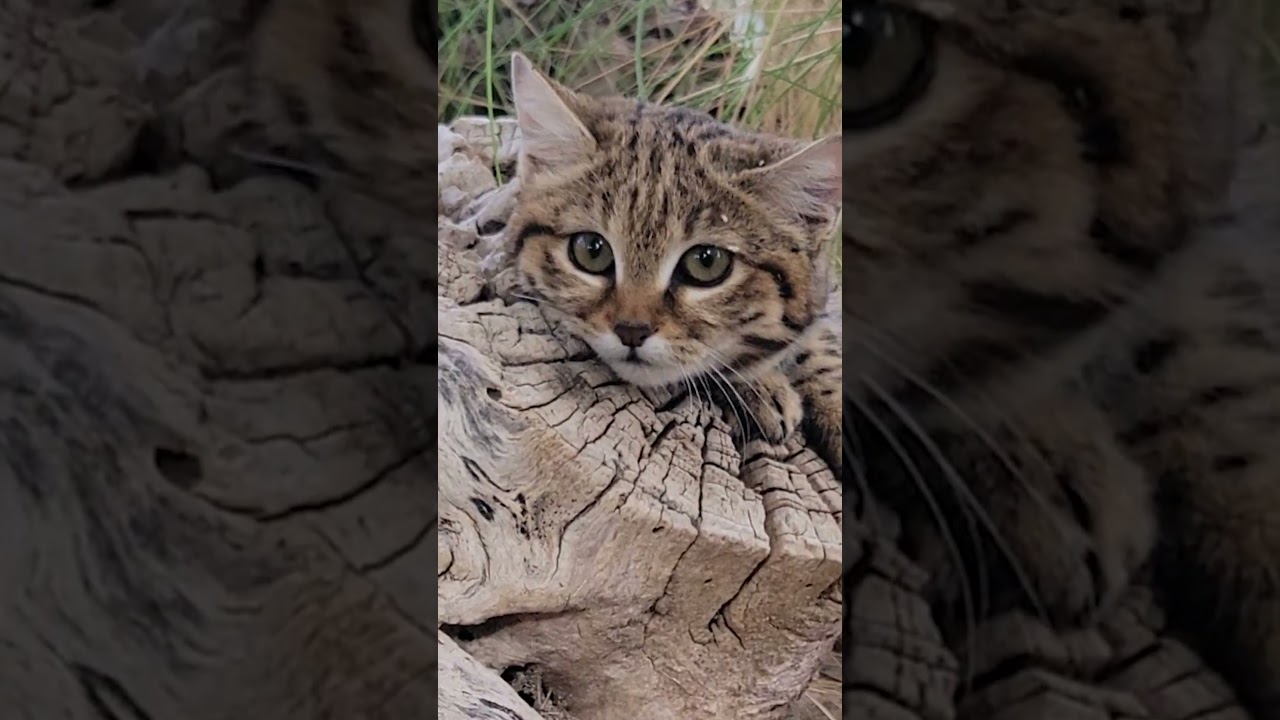– The biology and behavior of the black-footed cat, one of the smallest wild cat species
– Conservation status and efforts associated with black-footed cats
– The role of zoos in the preservation of this species and the importance of managed breeding programs
– The impact of habitat loss and fragmentation on black-footed cat populations
– How public engagement and education can aid in the conservation of the black-footed cat
The black-footed cat is a compelling creature — a diminutive predator with a reputation disproportionate to its size. Native to the arid steppe and savanna regions of southern Africa, this feline is one of Earth’s smallest wild cat species. Their nocturnal lifestyle and elusive nature make them a fascinating subject for wildlife enthusiasts and conservationists.
Black-footed cats (Felis nigripes) are biologically notable for their robust and solitary behaviors. Despite their size, which averages just 1.6 to 2.4 kg (3.5 to 5.3 pounds) for adults, they have an extraordinary hunting success rate, with some studies suggesting they catch more prey in a night than a leopard over several days. Their diminutive stature belies an aggressive nature and an impressive metabolism that necessitates consuming up to 20% of their body weight in a single night.
In terms of adaptive strategies, black-footed cats have developed several behaviors that enable them to survive in harsh environments. Their sandy to tawny coat with dark spots offers excellent camouflage against the dry grasslands of their habitat. Moreover, they require very little water, obtaining most of their moisture needs from their prey, including rodents, birds, and insects.
Turning to conservation, the International Union for Conservation of Nature (IUCN) classifies black-footed cats as vulnerable. An estimated 10,000 adults remain, and numbers are in decline due to threats such as habitat destruction, human-wildlife conflict, and infectious diseases. Conservation programs are working to monitor populations and mitigate threats, including land protection and management that ensures suitable habitats for these and other coexistent species.
Zoos play a pivotal role in conserving black-footed cats through captive breeding programs that strive to increase genetic diversity and maintain a healthy, insured population. Cooperative efforts between zoos across the globe have led to the successful breeding of black-footed cats in captivity, with some of the progeny being introduced back into their native habitat. To succeed, these programs require dedicated expertise in zoo management, animal husbandry, and reproductive biology. As part of these efforts, ethograms — detailed observations and recordings of the behavior of these cats — guide zoo professionals in providing for their psychological well-being, an aspect just as critical as their physical health.
Habitat loss and fragmentation significantly hinder the black-footed cat’s survival. Expanding human settlement and agriculture and the loss of grazing prey species reduce suitable living spaces for these cats. In response, wildlife corridors and habitat restoration projects are essential to their conservation, seeking to reconnect fragmented lands and preserve the ecological integrity of their environment.
Education and public engagement are also vital for conserving black-footed cats. Wildlife institutions can raise awareness and foster a connection between the public and these cats by sharing engaging videos or’ cutie shorts’ depicting them in their natural behavior or in zoos. Such initiatives prompt community involvement in conservation efforts and highlight the importance of biodiversity.
Conservation of black-footed cats is a complex task that demands a multifaceted approach. It involves preserving and managing natural habitats and fostering an awareness of the value these small predators bring to their ecosystems. Through the contributions of zoology, efforts in zoo management, and a commitment to wildlife conservation, we can ensure that future generations may also come to know the wonder of these remarkable feline inhabitants of our planet.
*****
Source Description
Friend shaped but not friend 🐱
Meet Meg, a black-footed cat, one of nature’s smallest and deadliest felines. These spicy little kitties have big appetites and an average 60% success rate when hunting for prey. They are a solitary species except during breeding season and are typically most active at night when they search for snacks.
#prettykitty #blackfootedcat #catsofinstagram #sdzsafaripark
Facebook – https://www.facebook.com/SanDiegoZoo/
Instagram – https://www.instagram.com/sandiegozoo/
Twitter – https://twitter.com/sandiegozoo
Giphy – https://giphy.com/sandiegozoo
TikTok – https://www.tiktok.com/@sandiegozoo
Twitch – https://www.twitch.tv/sandiegozoo

